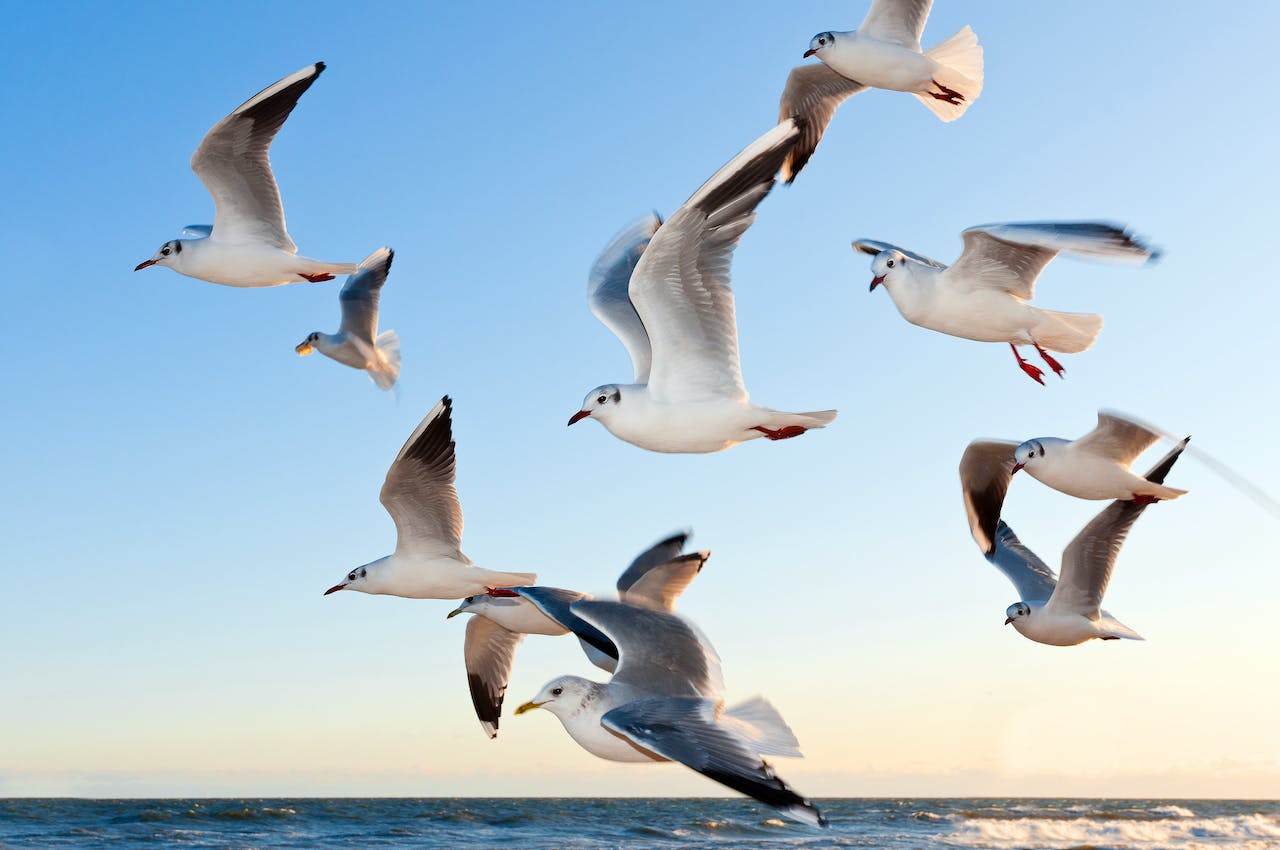Seagulls are a common sight in coastal areas all around the world. While some consider them to be a majestic creature, others see them as pesky scavengers.
Regardless of your opinion, there’s no denying that seagulls are fascinating birds. In this blog post, we’ll dive into what seagulls eat, their habits and behavior while providing you with a better understanding of these easily recognized birds.
What Do Seagulls Eat?
Seagulls are opportunistic feeders and eat anything that’s available. Their natural diet consists of fish, mollusks, and crustaceans, but they will also eat insects, small mammals, and carrion if necessary.
When scavenging for food, seagulls often target the leftovers of human meals and raids on garbage bins.
In the wild, seagulls plunge dive into the water and catch fish or scavenge for food near the shores.
Behavior
Seagulls have a unique behaviour while foraging for food. They show a technique called “stomping” where they stamp their feet on the ground, water, or sand to attract worms and insects to the surface, making it easier to catch their prey.

Additionally, seagulls also drop shellfish, hard-shelled creatures, or any hard object onto the hard surface- the rocks or concrete- to crack them open.
Seagulls are not territorial and have no permanent nests. Instead, they strongly establish specific areas to breed.
These areas are usually on ledges of tall buildings or coastal cliffs. Seagulls usually pair for life and can lay up to 3 eggs at a time.
Parents take turns incubating the eggs for about 3-4 weeks until they hatch. Once the chicks are born, they are fed on a diet of regurgitated fish and molluscs.
Habits
As social birds, seagulls are often seen in groups or flocks, often of hundreds of birds. They have different vocalizations or “calls” to communicate with each other or establish their territory for foraging purposes.
Their vocalizations are often described as screaming or screeching, and it’s one of the most recognizable sounds in nature.

Contrary to popular belief, seagulls are not aggressive by nature. However, they can swoop down if they feel threatened or are protecting their offspring.
It’s important to note that feeding seagulls is harmful to their health and can create dependency on human food, disrupting their natural diet and behavior.
5 Random Facts
- The term ‘seagull’ is actually a misnomer. The accurate term for these birds is ‘gulls’ as not all species of gulls live near the sea.
- Gulls have the unique ability to drink both fresh and salt water. They possess a special pair of glands right above their eyes which flush out the salt from their system.
- Gulls are known to have a strong memory. They can remember food sources and return to the same spots year after year.
- The lifespan of gulls can be surprisingly long. A herring gull, for instance, can live up to 49 years in the wild.
- Though notorious for their scavenging habits, gulls are also adept hunters and fishers. They often catch live food, including fish, crabs, and even small birds.
Conclusion
Seagulls are beautiful and fascinating birds that live all around the world. Their eating habits and behavior are essential to study, and it’s interesting to learn how these birds forage for food, breed, socialize and communicate with each other.
By understanding more about these birds, we can appreciate their role in the ecosystem and coexist with them in a peaceful manner.
